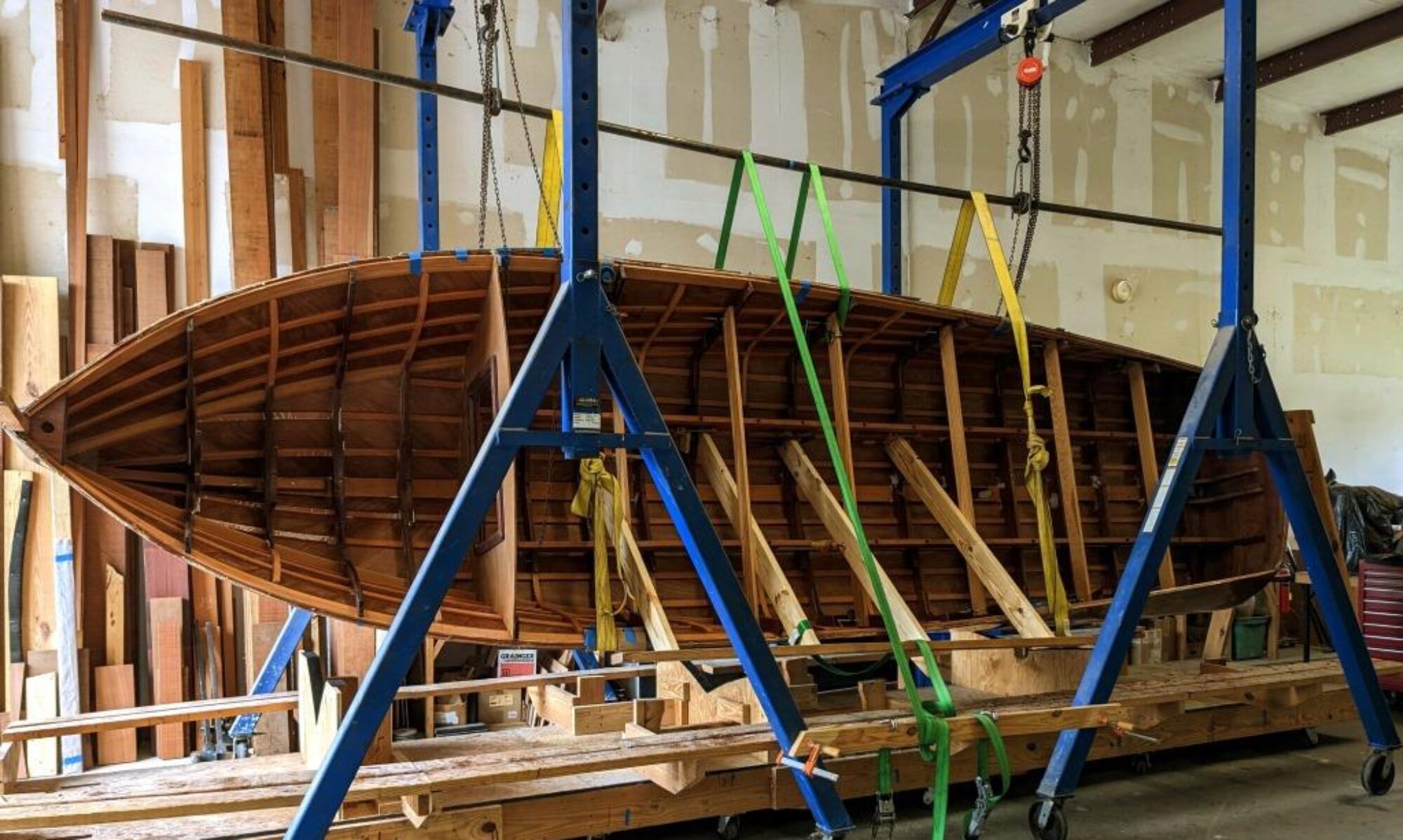
Now that all the planks are glued on to the bottom, it’s time to go boating, right? Not quite. There’s still a lot of work to do. We have to “fair” the bottom. That is to say, we need to make it smooth, with no abrupt dips or rises. It needs to be “sea-kindly” so that the surface addresses the water with as little resistance and turbulence as possible. We’ve just glued a set of flat planks onto a curved bottom. It stands to reason there’s going to be some sculpting to get them to follow the curves of the bottom smoothly.
This is best accomplished by the judicious use of a 6″ Festool DA (dual action) rotary sander/grinder with a soft pad. This tool will move some material. So take it slow. Don’t be afraid to stop and feel often. You can see what is fair after you’ve trained you’re eye. But your fingers can feel “fair” with no training at all. Trust them and take it slow.
In addition to grinding down some of the sharp edges, we can also fill low spots with epoxy fairing filler. We’ll apply the filler a little later, but it helps to bear in mind that filling is an option, in addition to grinding down. I use WEST System 410 fairing filler for this job. It’s easy to apply to the low spots, and it sands easily once it has cured.

Then, it’s a pretty straightforward job to glue the outer chine on. We’ve already defined our line and fit the outer chine, so it’s time to put it in place permanently. Just make sure there’s plenty of glue so you get good squeeze-out. This is definitely a place where you don’t want voids that can trap water and promote rot.


Then we have to trim the top of the outer chine (actually the bottom, but since we’re upside down, I’ll call it the top) flush with the bottom planking. This is easily accomplished with a low angle block plane held to the face of the bottom planking.
